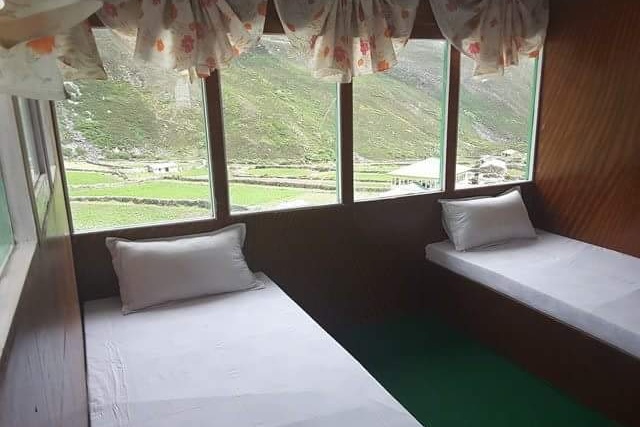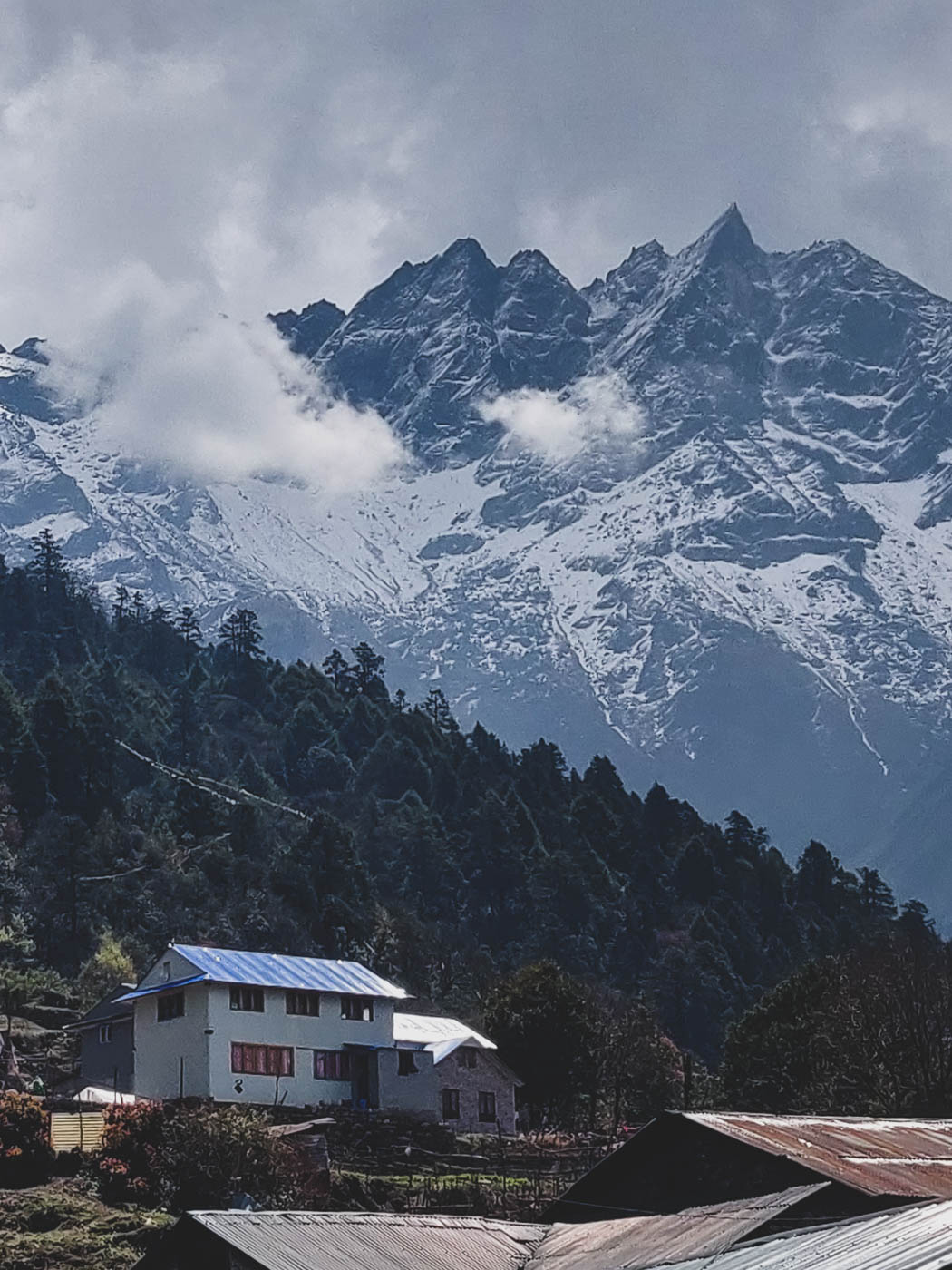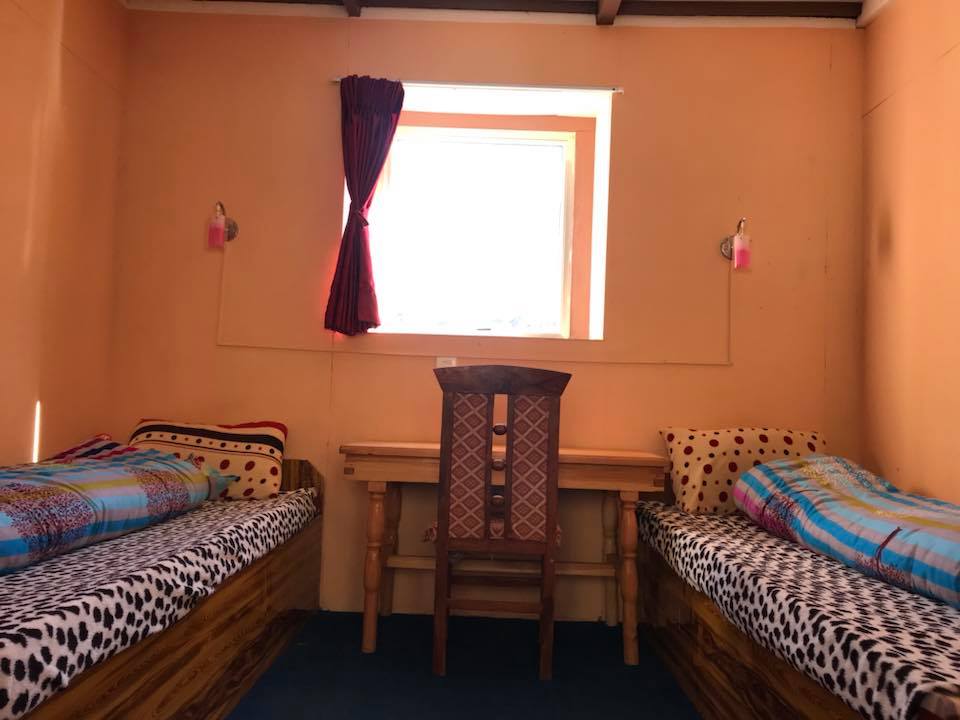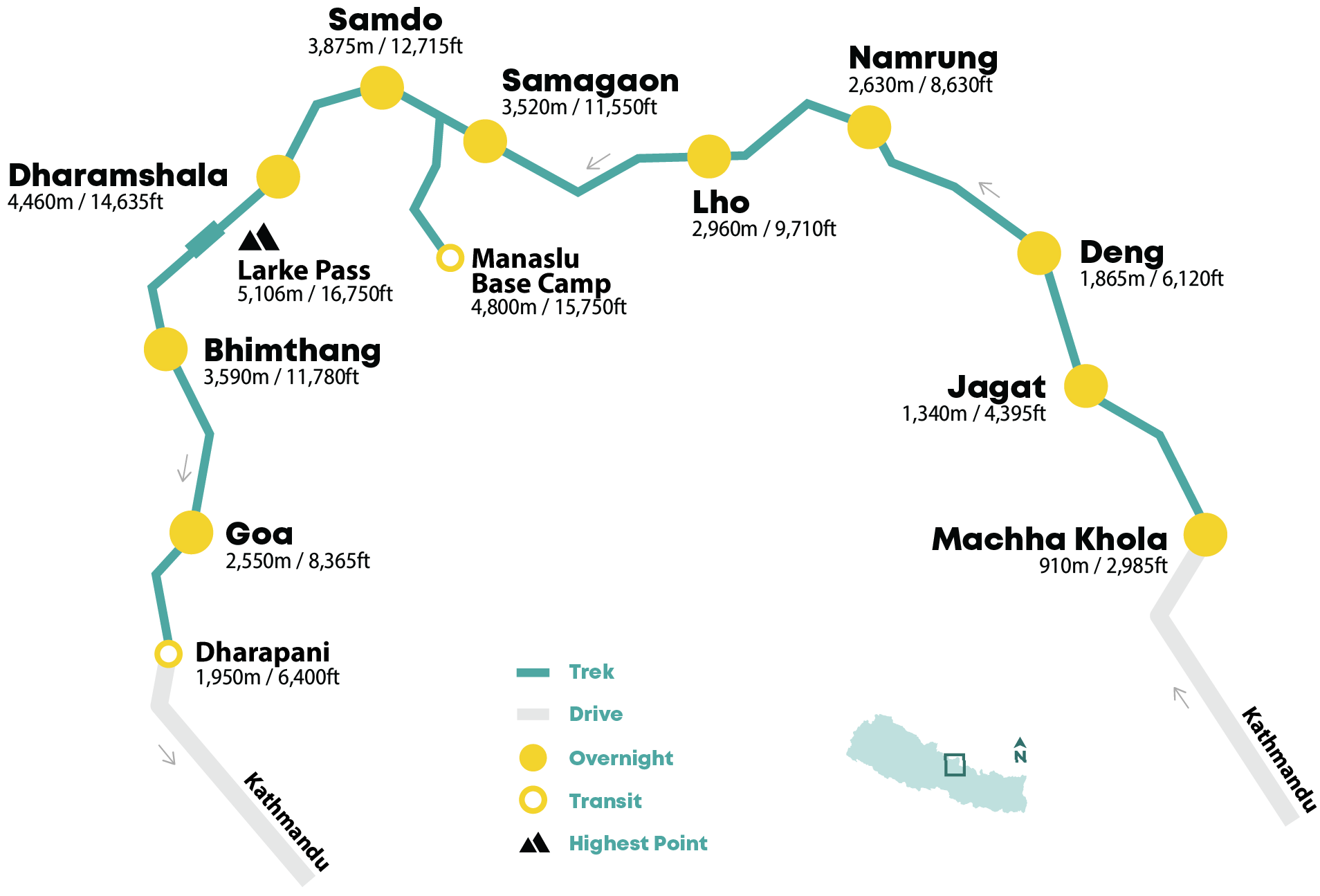|
Mountain Trek / Manaslu Region / Nepal Manaslu Circuit TrekNext tentative Date: Available as a Private Trek on a date of your preference.
Circumnavigate on the barely trodden valley around Manaslu, the 8th highest mountain in the world, and witness old Buddhist settlements seemingly lost in time. |
Overview
Circumnavigate on the barely trodden valley around Manaslu, the 8th highest mountain in the world, and witness old Buddhist settlements seemingly lost in time.
Highlights
| Walk along Budi Gandaki river that cuts through the steep cliffs of Gorkha. | |
| Traversing through villages and settlements that are secluded from road transport and other technologies. | |
| Crossing Larke Pass at 5,106m (16,752ft) with enormous snowcapped mountains surrounding you on all sides, and converging 4 glaciers below. | |
| People's traditional way of life and living, be it on the mountains, rivers or forests. | |
| Walking on the stretch to Pungen Gompa, perched on the end of a long plateau below towering mountains. | |
| The change in landscape and vegetation as you move from green and humid lowlands to rocky and arid highlands. | |
| Lho, Samagaon and Bhimthang villages against mountain backdrop which look like they've been taken out of a fairly tale. | |
| Walking above the turquoise Birendra Lake near Samagaon on the way to Manaslu Base Camp. | |
| The long approach downhill to Dharapani, and the rugged and tight terrains of Manang, followed by dramatic and scenic drive back to Kathmandu. |
Manaslu Circuit Trek is a challenging and remote trek in Nepal suitable for experienced trekkers. It is a restricted area trek requiring you to obtain special permits to enter this region. You need to have a good to excellent level of fitness, as it involves long days of trekking in high altitudes and crossing challenging mountain passes. The trails on the Manaslu Circuit Trek vary, with some well-defined paths and others that may be rough and narrow. In certain sections, you may need to trek on rocky or uneven terrain. You will also pass some rockfall areas and cross suspension bridges.
The highest point of the trek is the Larkya La Pass, at an altitude of 5,160 meters (16,929 feet). Prior experience with high-altitude trekking is beneficial, but even if you don't have any previous experience, the trek includes acclimatization days to help your body adjust to the altitude gradually. Accommodation on this trek is much more basic than other trekking regions. Our itineraries are carefully planned to go at a comfortable pace and we make sure that our seasoned guides will make your trek safe and enjoyable.
Best time to go
JanFebMarAprMayJunJulAugSepOctNovDec
JanFebMarAprMayJun
JulAugSepOctNovDec
| Group Sizepax | Fixed Departureprices per person | Regularprices per person |
| 4 - 8 | USD 1300 | USD 1325 |
| 8 & up | USD 1000 | USD 1100 |
|
|
|
|
|
Prices valid until Dec 31st, 2026
-along-Manaslu-Circuit_vonKathmandu.jpg)
Night skies over Bhimthang, the first settlement after crossing Larke Pass (5,106m) along Manaslu Circuit
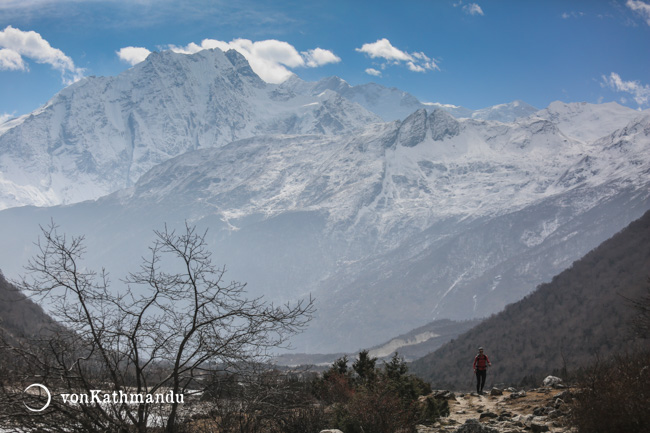
On the trail between Samagaon and Samdo
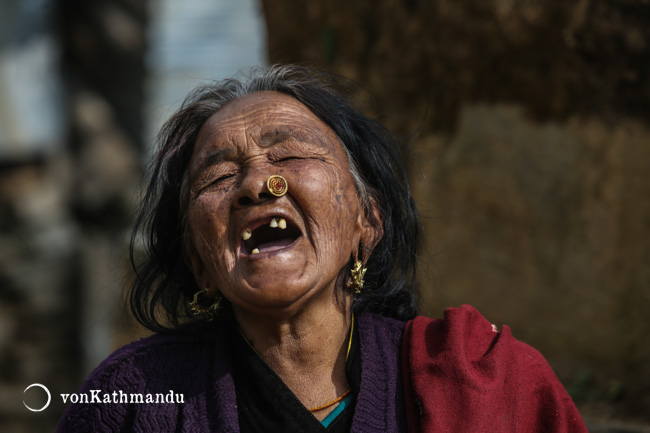
An elderly jolly lady of Gurung caste
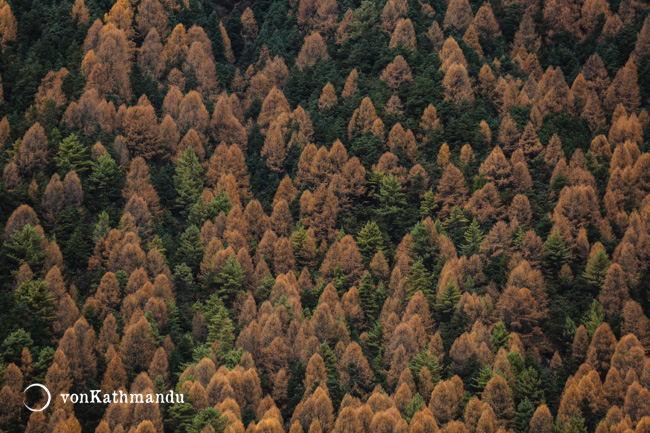
Fall colors of Manaslu
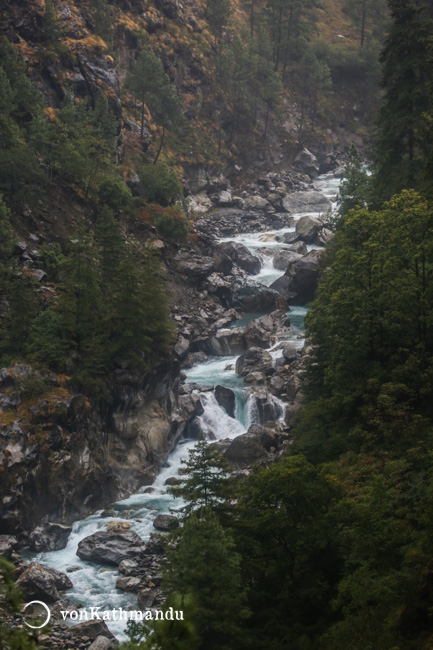
Pristine river gushing through
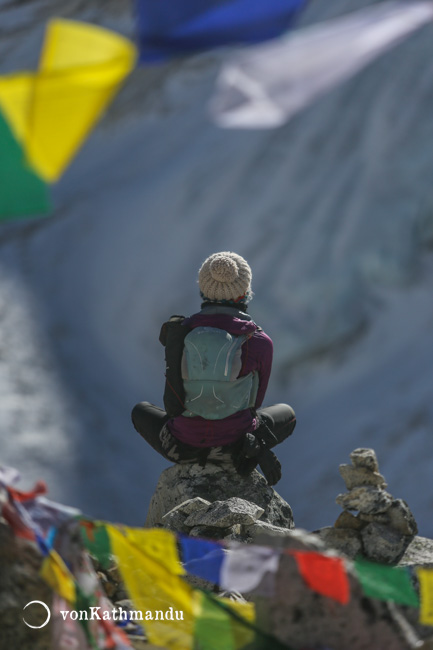
A quick break to catch breath and admire the views at Larke Pass, highest point of the trek
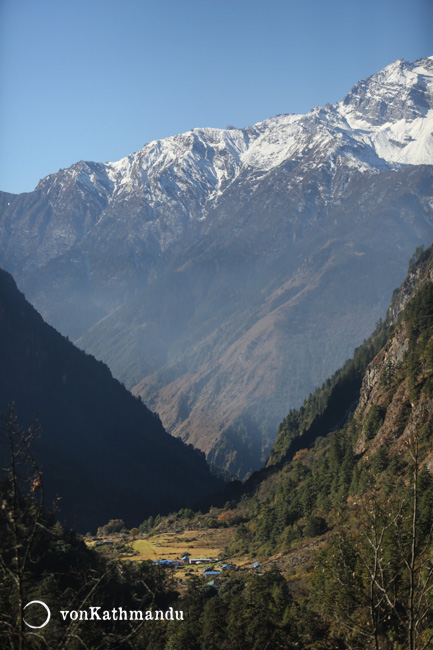
Back to vegetation after rocky climb to the pass
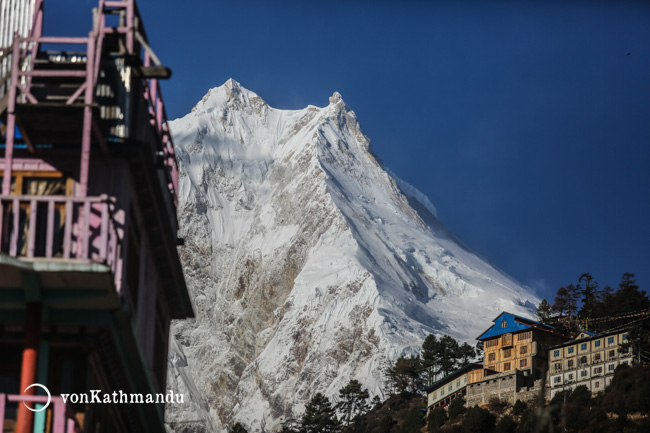
Manaslu and her twin summits as observed from Lho
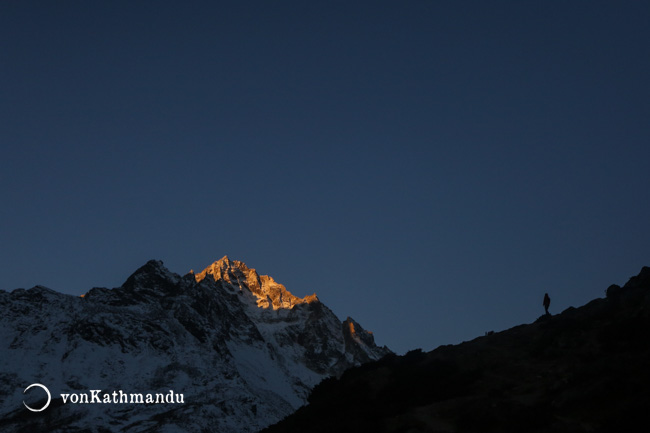
Morning rays on the climb to Larke Pass
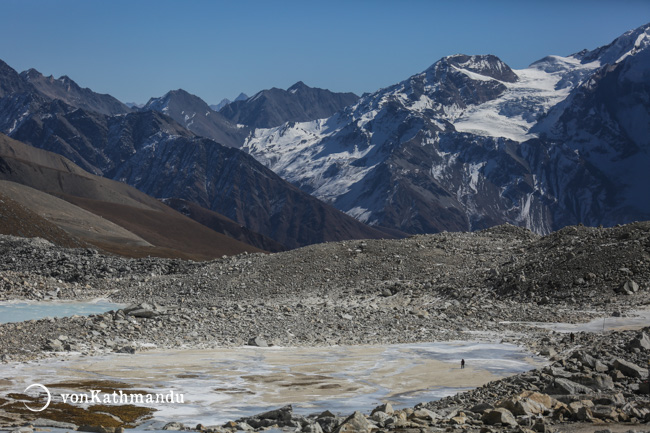
Walking on a frozen lake near Larke Pass
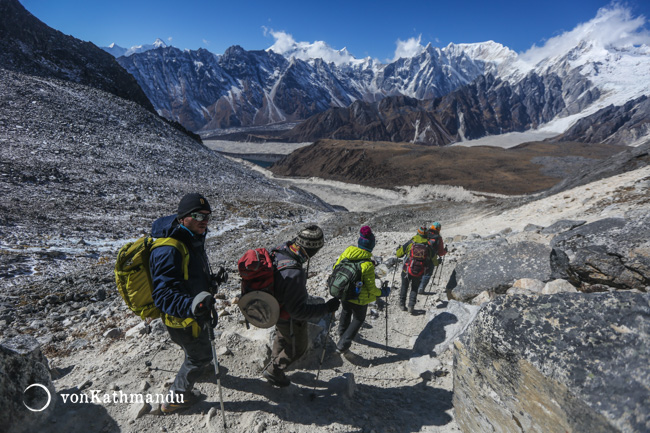
Heading down from Larke Pass towards Bhimthang. To the right are four glaciers.
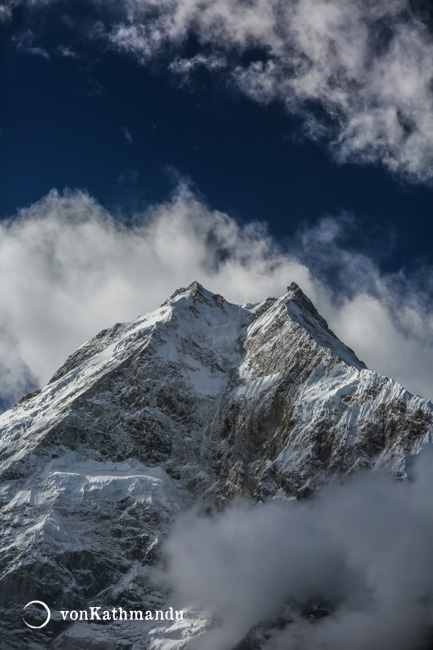
Manaslu at 8,163m is the eigth highest mountain in the world
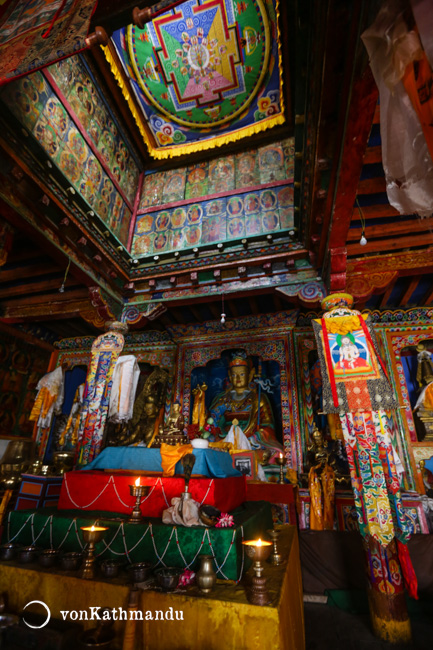
Altar inside the main monastery of Samagaon
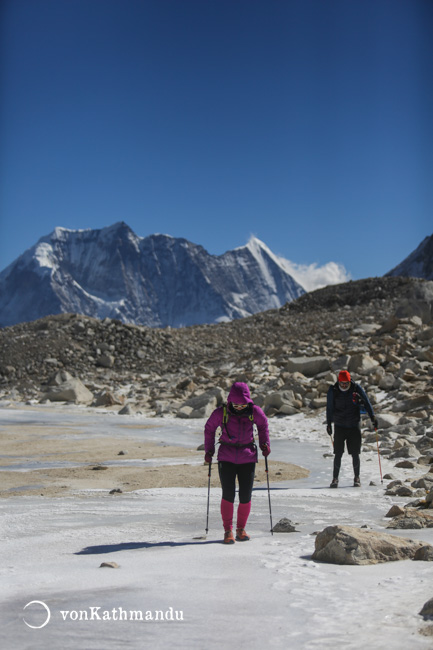
Walking on a frozen lake near Larke Pass
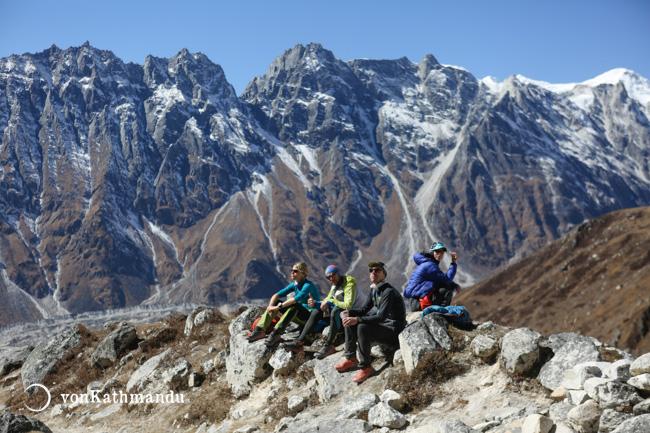
Quick pause at Larke Pass
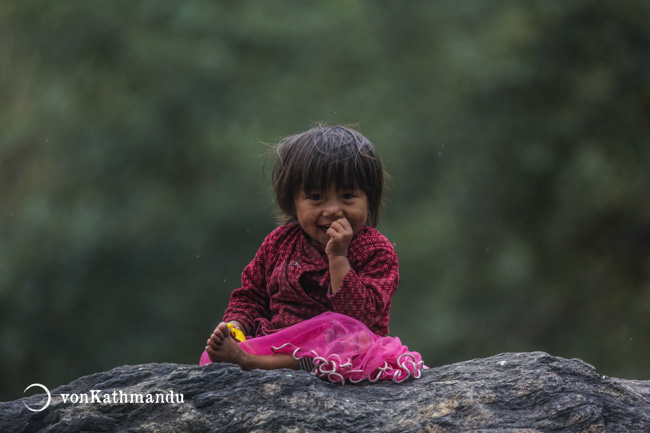
Gurung girl smiles at trekkers
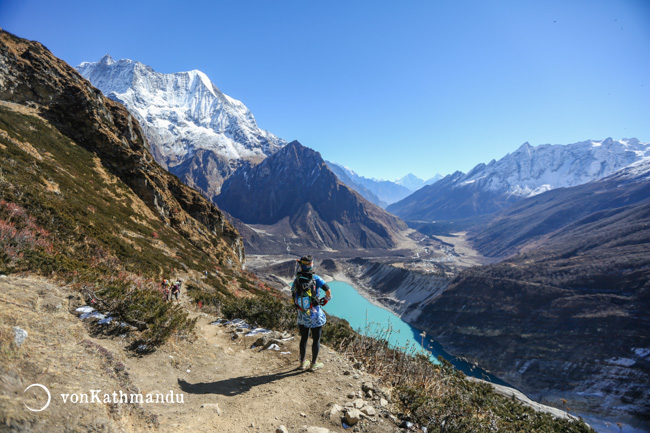
Birendra Lake in is fed by glaciers, where the emerald colors come from
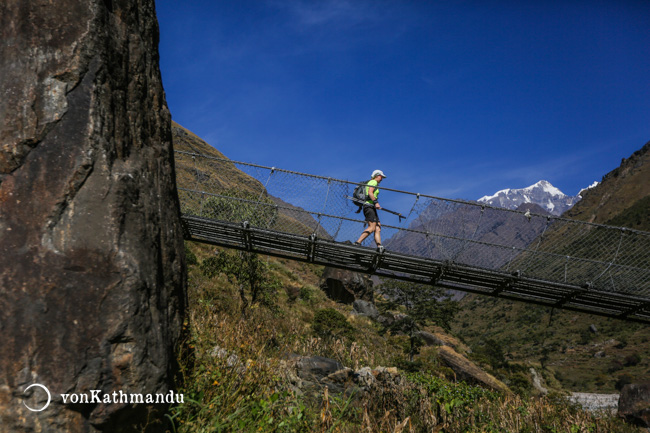
Suspension bridge at Philim
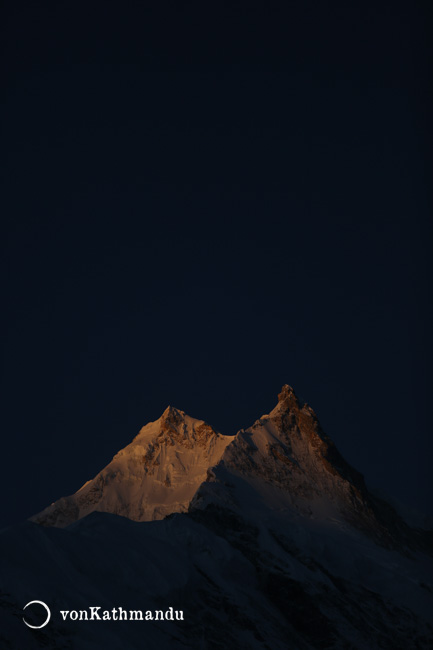
Evening colors on Manaslu
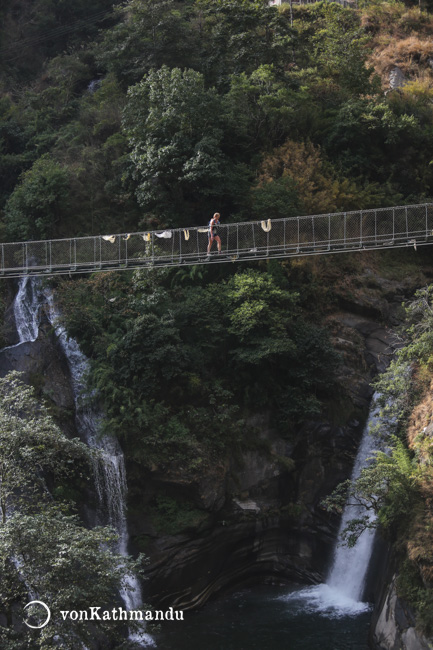
Two of the many waterfalls on the route
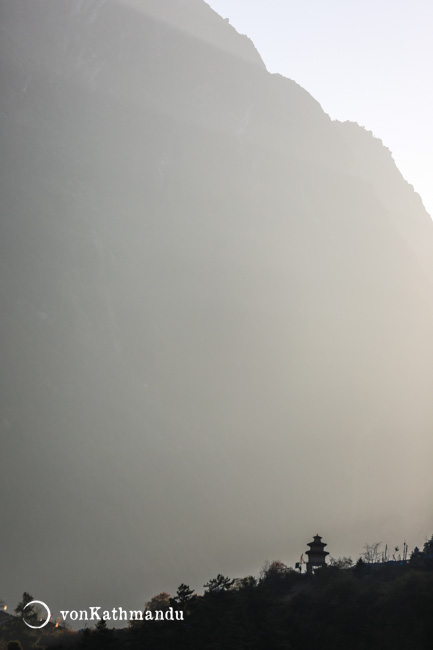
Buddhist chorten in early morning lights
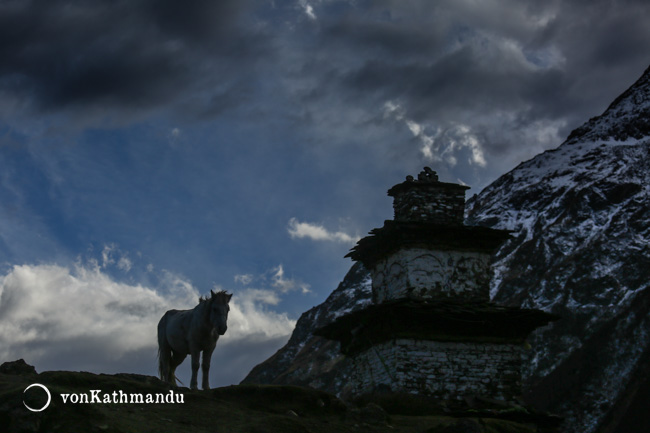
Horse in Samdo silhouetted against evening skies
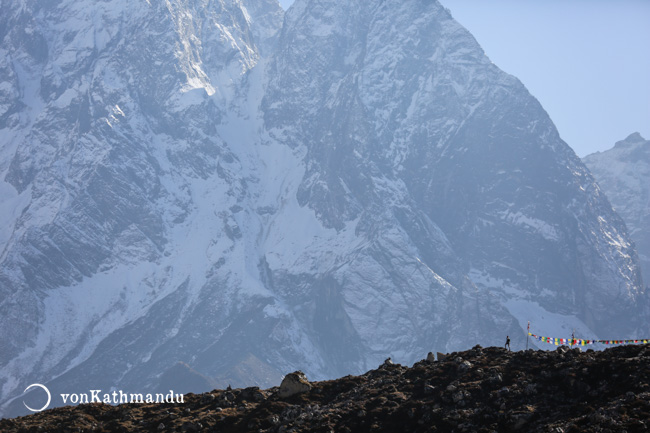
Scale of mountains in Manaslu is humbling
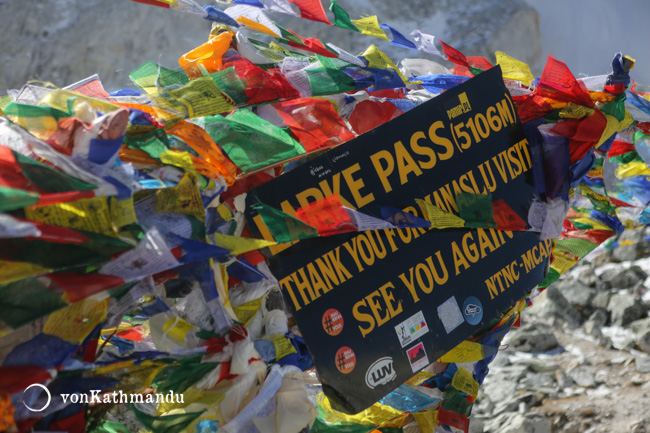
Highest point of the trek, Larke Pass at 5,106m
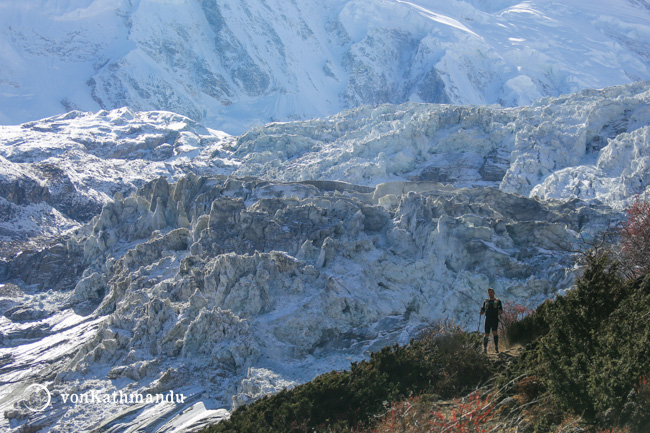
A trekker walks down from Manaslu Base Camp
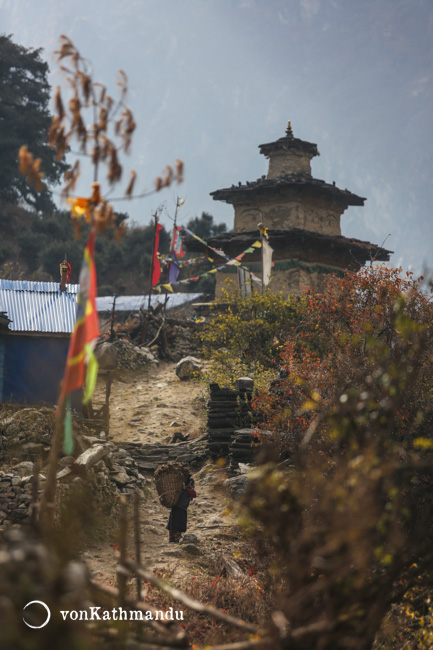
A kid carrying cattle fooder in a handwoven bamboo basket called doko
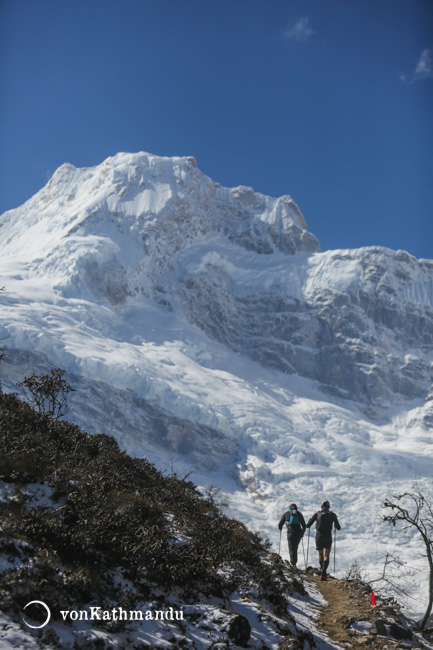
Walking up to Pungen Gompa
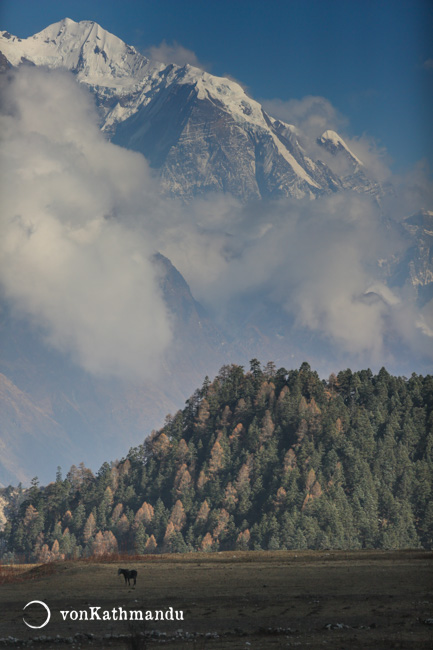
Mule grazing in pastures of Namrung
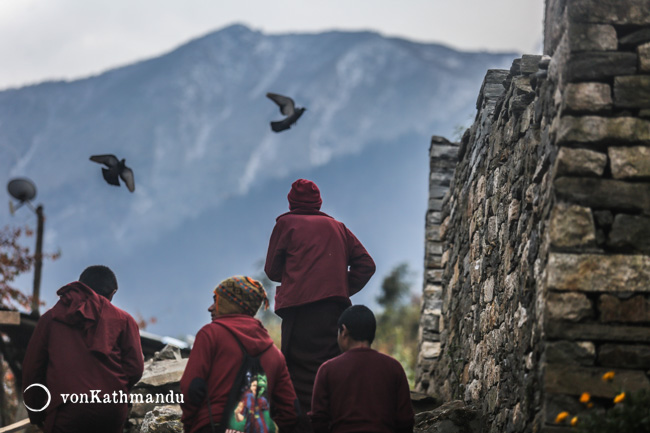
Manaslu has a considerable number of monasteries, where monks study, reside and pray
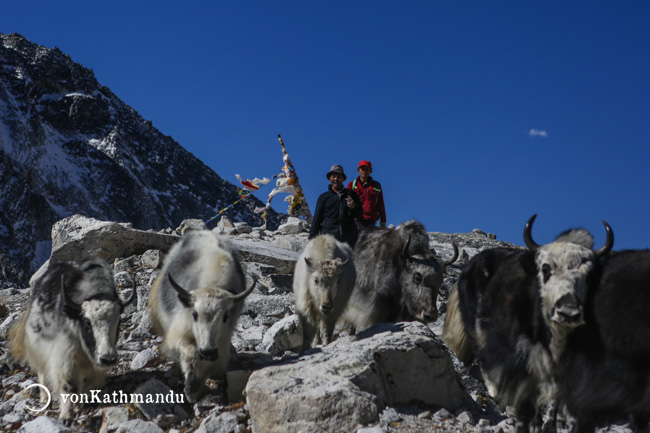
Yaks crossing Larke Pass
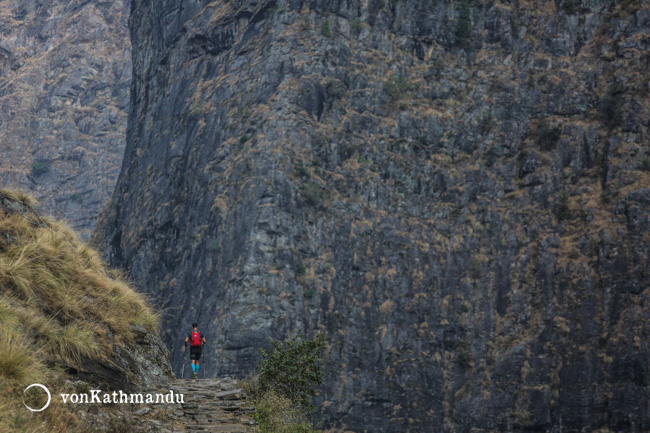
Walking through the narrow gorge along a river. Giant rocky cliffs surround you on both sides
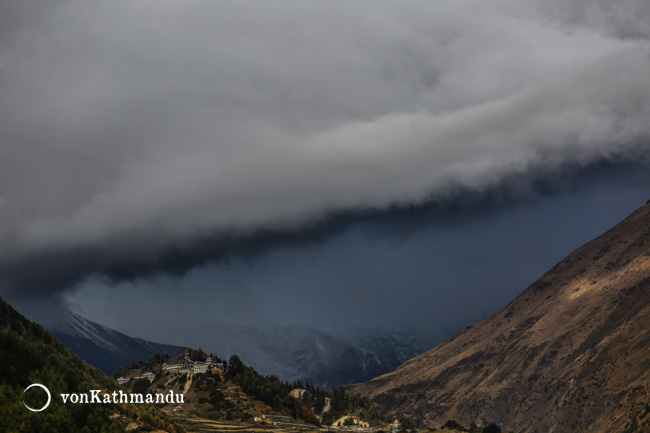
Ominous snow clouds over Lho village
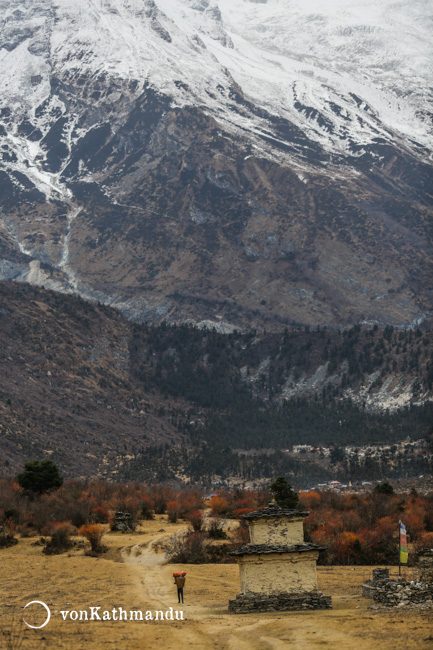
With no roads higher up, all goods are ferried by either porters, mules or yaks
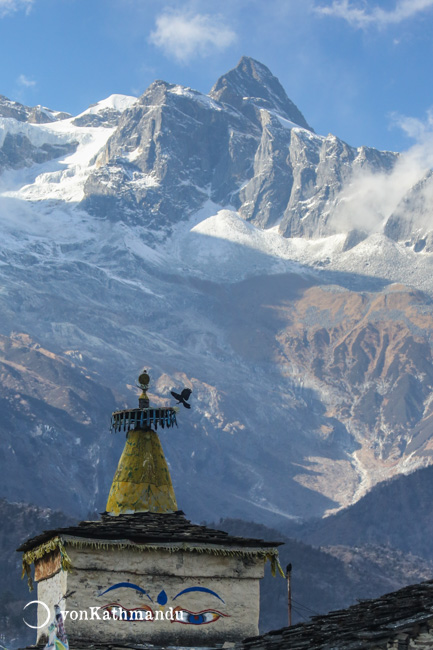
Eyes of Buddha on a chhorten in Samagaon, one of the largest villages in Manaslu region
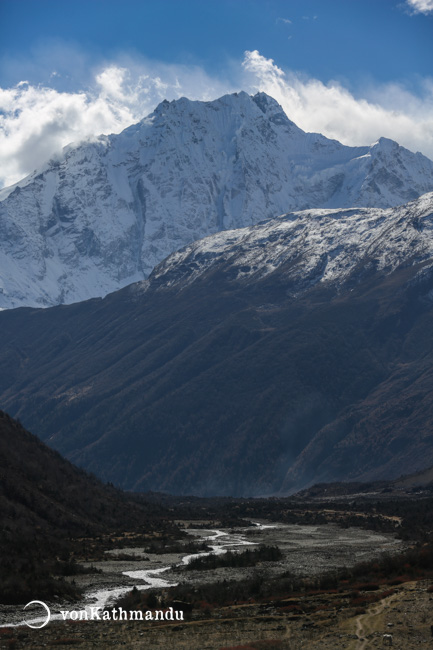
Samagaon village lies by the rivers below the mountain
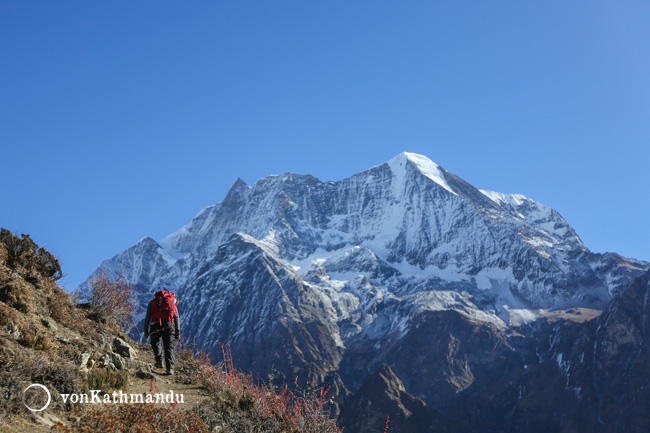
En route to Manaslu Base Camp
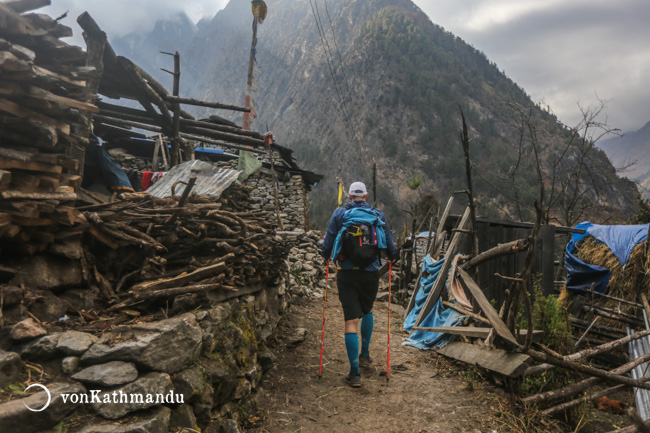
Lho village
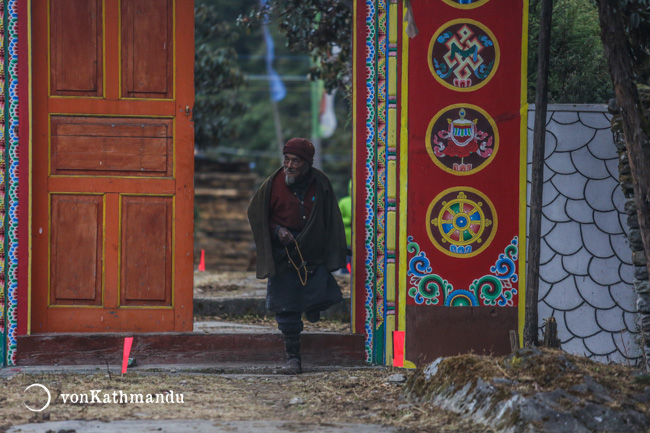
Buddhist monk
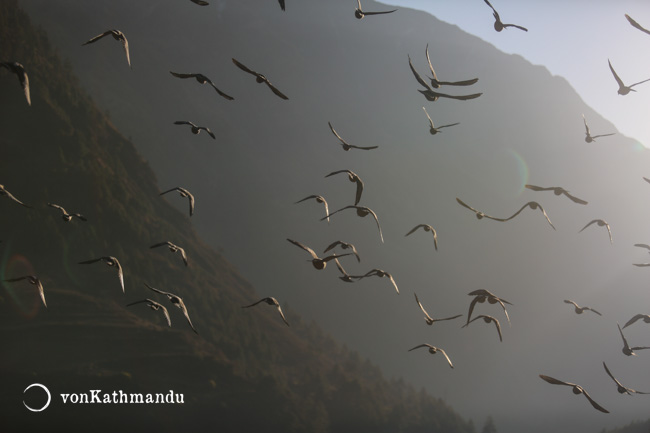
Piegons at lower elevations of the trek
Itinerary
|
Day 1 |
Kathmandu - Machha Khola |
|
|
Day 2 |
Machha Khola - Jagat |
|
|
Day 3 |
Jagat - Deng |
|
|
Day 4 |
Deng - Namrung |
|
|
Day 5 |
Namrung - Lho |
|
|
Day 6 |
Lho - Samagaon |
|
|
Day 7 |
Acclimatization day in Samagaon |
|
|
Day 8 |
Samagaon - Samdo |
|
|
Day 9 |
Acclimatization in Samdo |
|
|
Day 10 |
Samdo - Dharamshala |
|
|
Day 11 |
Dharamshala - Larke Pass - Bhimthang |
|
|
Day 12 |
Bhimthang - Goa/Gho |
|
|
Day 13 |
Goa - Dharapani - Kathmandu |
|
|
Day 1 |
Kathmandu - Machha Khola |
|
|
Drive from Kathmandu to Machha Khola 8 to 10 hrs |
Meals Included: Breakfast
Accommodation: Mountain Lodge
|
Day 2 |
Machha Khola - Jagat |
|
|
Trek from Machha Khola to Jagat 6 to 7 hrs |
Meals Included: Breakfast
Accommodation: Mountain Lodge
|
Day 3 |
Jagat - Deng |
|
|
Trek from Jagat to Deng 6 to 7 hrs |
Meals Included: Breakfast
Accommodation: Mountain Lodge
|
Day 4 |
Deng - Namrung |
|
|
Trek from Deng to Namrung 6 to 7 hrs |
Meals Included: Breakfast
Accommodation: Mountain Lodge
|
Day 5 |
Namrung - Lho |
|
|
Trek from Namrung to Lho 4 to 5 hrs |
Meals Included: Breakfast
Accommodation: Mountain Lodge
|
Day 6 |
Lho - Samagaon |
|
|
Trek from Lho to Samagaon 5 to 6 hrs |
Meals Included: Breakfast
Accommodation: Mountain Lodge
|
Day 7 |
Acclimatization day in Samagaon |
|
|
Acclimatization hike to the Manaslu Base Camp or Birendra Tal |
Meals Included: Breakfast
Accommodation: Mountain Lodge
|
Day 8 |
Samagaon - Samdo |
|
|
Trek from Samagaon to Samdo 3.5 to 4 hrs |
Meals Included: Breakfast
Accommodation: Mountain Lodge
|
Day 9 |
Acclimatization in Samdo |
|
|
Optional acclimatization hike to the Tibetean border 7 to 8 hrs |
Meals Included: Breakfast
Accommodation: Mountain Lodge
|
Day 10 |
Samdo - Dharamshala |
|
|
Trek from Samdo to Dharamshala 4 to 5 hrs |
Meals Included: Breakfast
Accommodation: Mountain Lodge
|
Day 11 |
Dharamshala - Larke Pass - Bhimthang |
|
|
Trek from Dharamshala to Bhimthang, via Larke Pass 8 to 9 hrs |
Meals Included: Breakfast
Accommodation: Mountain Lodge
|
Day 12 |
Bhimthang - Goa/Gho |
|
|
Trek from Bhimthang to Goa/Gho 4 to 5 hrs |
Meals Included: Breakfast
Accommodation: Mountain Lodge
|
Day 13 |
Goa - Dharapani - Kathmandu |
|
|
Trek from Goa to the nearest roadhead 1 to 2 hrs |
|
|
Drive from Dharapani to Kathmandu 10 hrs |
Meals Included: Breakfast
Mountain Lodge |
X Close Accommodation Popup
X Close Popup
Nepal
Mountain lodges are the basic accommodation set up by locals to cater to trekkers in the trails. The common features across all lodges are standard rooms, a spacious and heated dining hall, and a restaurant with a menu. The rooms in mountain lodges generally have two or three twin beds with a mattress and blanket. If you are used to sleeping warm, we highly recommend bringing your own sleeping bag and liner. Other amenities could be a table, hanger, and dustbin but do not expect to have charging ports and attached toilets in the rooms. Moreover, it is mandatory to have meals in the facility you’re staying at.
Room Amenities
| • | Shared Toilet |
Property Amenities
| • | Restaurant and Bar | • | Outdoor Seating | • | Mountain Views |
Mountain Lodge |
X Close Accommodation Popup
X Close Popup
Nepal
Mountain lodges are the basic accommodation set up by locals to cater to trekkers in the trails. The common features across all lodges are standard rooms, a spacious and heated dining hall, and a restaurant with a menu. The rooms in mountain lodges generally have two or three twin beds with a mattress and blanket. If you are used to sleeping warm, we highly recommend bringing your own sleeping bag and liner. Other amenities could be a table, hanger, and dustbin but do not expect to have charging ports and attached toilets in the rooms. Moreover, it is mandatory to have meals in the facility you’re staying at.
Room Amenities
| • | Shared Toilet |
Property Amenities
| • | Restaurant and Bar | • | Outdoor Seating | • | Mountain Views |
Mountain Lodge |
X Close Accommodation Popup
X Close Popup
Nepal
Mountain lodges are the basic accommodation set up by locals to cater to trekkers in the trails. The common features across all lodges are standard rooms, a spacious and heated dining hall, and a restaurant with a menu. The rooms in mountain lodges generally have two or three twin beds with a mattress and blanket. If you are used to sleeping warm, we highly recommend bringing your own sleeping bag and liner. Other amenities could be a table, hanger, and dustbin but do not expect to have charging ports and attached toilets in the rooms. Moreover, it is mandatory to have meals in the facility you’re staying at.
Room Amenities
| • | Shared Toilet |
Property Amenities
| • | Restaurant and Bar | • | Outdoor Seating | • | Mountain Views |
Mountain Lodge |
X Close Accommodation Popup
X Close Popup
Nepal
Mountain lodges are the basic accommodation set up by locals to cater to trekkers in the trails. The common features across all lodges are standard rooms, a spacious and heated dining hall, and a restaurant with a menu. The rooms in mountain lodges generally have two or three twin beds with a mattress and blanket. If you are used to sleeping warm, we highly recommend bringing your own sleeping bag and liner. Other amenities could be a table, hanger, and dustbin but do not expect to have charging ports and attached toilets in the rooms. Moreover, it is mandatory to have meals in the facility you’re staying at.
Room Amenities
| • | Shared Toilet |
Property Amenities
| • | Restaurant and Bar | • | Outdoor Seating | • | Mountain Views |
Mountain Lodge |
X Close Accommodation Popup
X Close Popup
Nepal
Mountain lodges are the basic accommodation set up by locals to cater to trekkers in the trails. The common features across all lodges are standard rooms, a spacious and heated dining hall, and a restaurant with a menu. The rooms in mountain lodges generally have two or three twin beds with a mattress and blanket. If you are used to sleeping warm, we highly recommend bringing your own sleeping bag and liner. Other amenities could be a table, hanger, and dustbin but do not expect to have charging ports and attached toilets in the rooms. Moreover, it is mandatory to have meals in the facility you’re staying at.
Room Amenities
| • | Shared Toilet |
Property Amenities
| • | Restaurant and Bar | • | Outdoor Seating | • | Mountain Views |
Mountain Lodge |
X Close Accommodation Popup
X Close Popup
Nepal
Mountain lodges are the basic accommodation set up by locals to cater to trekkers in the trails. The common features across all lodges are standard rooms, a spacious and heated dining hall, and a restaurant with a menu. The rooms in mountain lodges generally have two or three twin beds with a mattress and blanket. If you are used to sleeping warm, we highly recommend bringing your own sleeping bag and liner. Other amenities could be a table, hanger, and dustbin but do not expect to have charging ports and attached toilets in the rooms. Moreover, it is mandatory to have meals in the facility you’re staying at.
Room Amenities
| • | Shared Toilet |
Property Amenities
| • | Restaurant and Bar | • | Outdoor Seating | • | Mountain Views |
Mountain Lodge |
X Close Accommodation Popup
X Close Popup
Nepal
Mountain lodges are the basic accommodation set up by locals to cater to trekkers in the trails. The common features across all lodges are standard rooms, a spacious and heated dining hall, and a restaurant with a menu. The rooms in mountain lodges generally have two or three twin beds with a mattress and blanket. If you are used to sleeping warm, we highly recommend bringing your own sleeping bag and liner. Other amenities could be a table, hanger, and dustbin but do not expect to have charging ports and attached toilets in the rooms. Moreover, it is mandatory to have meals in the facility you’re staying at.
Room Amenities
| • | Shared Toilet |
Property Amenities
| • | Restaurant and Bar | • | Outdoor Seating | • | Mountain Views |
Mountain Lodge |
X Close Accommodation Popup
X Close Popup
Nepal
Mountain lodges are the basic accommodation set up by locals to cater to trekkers in the trails. The common features across all lodges are standard rooms, a spacious and heated dining hall, and a restaurant with a menu. The rooms in mountain lodges generally have two or three twin beds with a mattress and blanket. If you are used to sleeping warm, we highly recommend bringing your own sleeping bag and liner. Other amenities could be a table, hanger, and dustbin but do not expect to have charging ports and attached toilets in the rooms. Moreover, it is mandatory to have meals in the facility you’re staying at.
Room Amenities
| • | Shared Toilet |
Property Amenities
| • | Restaurant and Bar | • | Outdoor Seating | • | Mountain Views |
Mountain Lodge |
X Close Accommodation Popup
X Close Popup
Nepal
Mountain lodges are the basic accommodation set up by locals to cater to trekkers in the trails. The common features across all lodges are standard rooms, a spacious and heated dining hall, and a restaurant with a menu. The rooms in mountain lodges generally have two or three twin beds with a mattress and blanket. If you are used to sleeping warm, we highly recommend bringing your own sleeping bag and liner. Other amenities could be a table, hanger, and dustbin but do not expect to have charging ports and attached toilets in the rooms. Moreover, it is mandatory to have meals in the facility you’re staying at.
Room Amenities
| • | Shared Toilet |
Property Amenities
| • | Restaurant and Bar | • | Outdoor Seating | • | Mountain Views |
Mountain Lodge |
X Close Accommodation Popup
X Close Popup
Nepal
Mountain lodges are the basic accommodation set up by locals to cater to trekkers in the trails. The common features across all lodges are standard rooms, a spacious and heated dining hall, and a restaurant with a menu. The rooms in mountain lodges generally have two or three twin beds with a mattress and blanket. If you are used to sleeping warm, we highly recommend bringing your own sleeping bag and liner. Other amenities could be a table, hanger, and dustbin but do not expect to have charging ports and attached toilets in the rooms. Moreover, it is mandatory to have meals in the facility you’re staying at.
Room Amenities
| • | Shared Toilet |
Property Amenities
| • | Restaurant and Bar | • | Outdoor Seating | • | Mountain Views |
Mountain Lodge |
X Close Accommodation Popup
X Close Popup
Nepal
Mountain lodges are the basic accommodation set up by locals to cater to trekkers in the trails. The common features across all lodges are standard rooms, a spacious and heated dining hall, and a restaurant with a menu. The rooms in mountain lodges generally have two or three twin beds with a mattress and blanket. If you are used to sleeping warm, we highly recommend bringing your own sleeping bag and liner. Other amenities could be a table, hanger, and dustbin but do not expect to have charging ports and attached toilets in the rooms. Moreover, it is mandatory to have meals in the facility you’re staying at.
Room Amenities
| • | Shared Toilet |
Property Amenities
| • | Restaurant and Bar | • | Outdoor Seating | • | Mountain Views |
Mountain Lodge |
X Close Accommodation Popup
X Close Popup
Nepal
Mountain lodges are the basic accommodation set up by locals to cater to trekkers in the trails. The common features across all lodges are standard rooms, a spacious and heated dining hall, and a restaurant with a menu. The rooms in mountain lodges generally have two or three twin beds with a mattress and blanket. If you are used to sleeping warm, we highly recommend bringing your own sleeping bag and liner. Other amenities could be a table, hanger, and dustbin but do not expect to have charging ports and attached toilets in the rooms. Moreover, it is mandatory to have meals in the facility you’re staying at.
Room Amenities
| • | Shared Toilet |
Property Amenities
| • | Restaurant and Bar | • | Outdoor Seating | • | Mountain Views |
Customize this trip
Take a heli back.
For those short on time or looking to add an exhilarating experience of flying over the majestic Himalayas, you have the option to charter a private helicopter on the way down. Inquire for prices and options!
Kathmandu Hotel and Transfers
-
If you’d like us to organize airport transfers and arrange your stay in Kathmandu or any other cities, let us know. We’re happy to give you options based on your preference, and book them for you.
Here’s one of our popular 2 days add-on: USD 185 per person:
- Airport pick up and drop off, facilitated by an English-speaking representative
- 2 nights in a four-star hotel in Kathmandu (Hotel Shankar or similar) on bed & breakfast plan and twin-sharing basis
